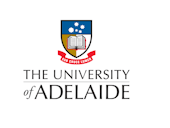I went to the University of Calgary for a post-doc with John Prescott where, with Jim Hough, we continued to work on measurements of radio emission. This was my first introduction to infra-red since Alan Clark at Calgary was working on various forms of infra red astronomy at that time - as he still is. John got a Chair at Adelaide and I came to work on the transported experiment and to get it running well. That took the next 20 years or so.
John moved his main interests to archaeometry and I got interested in Cerenkov emission as a tool, together with cosmic ray anisotropy studies. They have been continuing themes since then. Alan Gregory and John Patterson joined the team early on and eventually moved into Cerenkov VHE gamma-ray astronomy, and I tried to assist. That has taken much more of my time since both Alan and then John retired and I had made a commitment to Tadashi Kifune that I would continue to provide Australian support for the CANGAROO collaboration.
The Buckland Park array closed effectively at the end of the 1980's and Bruce Dawson came back whilst I was Dean of Science. Bruce and I have continued with air showers, but in a larger league, with HiRes and the Pierre Auger project. We got into cloud detection as a practical sideline because the projects needed such a technique. Actually, Alan Gregory was the first at Adelaide to try that. Infra-red has taken up more of my time than I ever intended but I soon realised that there wasn't as much understanding of the infra-red properties of the atmosphere as I had imagined. It has taken some years to get a clear picture (possibly incorrect) of how heat flows to us and away. This is particularly interesting in an urban environment.
Following the closing of the Buckland Park array, we moved a number of the detectors close together to examine the muon flux. This gives a really easy, and fascinating, way to monitor the activity in the solar system. Every home should have one. The Buckland Park muon detector system works pretty well, although it is probably not yet quite good enough to become part of the Spaceship Earth consortium. We are nearly there but it will just take a bit more effort and time - precious commodities.
Experience
-
–presentProfessor of Astrophysics, University of Adelaide
Education
-
1971Imperial College, London, PhD/Astrophysics
- Adelaide, Australia
- Website
- Article Feed
- 0883035046
- roger.clay@adelaide.edu.au
- Joined


